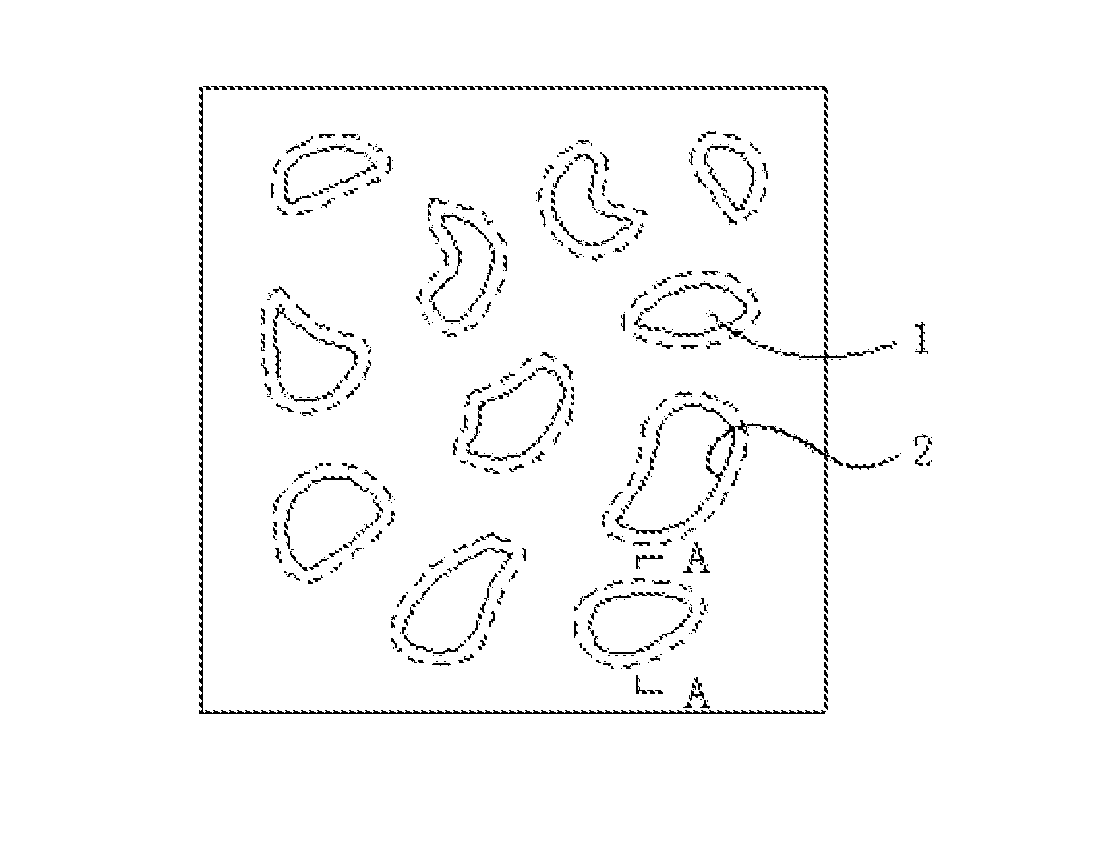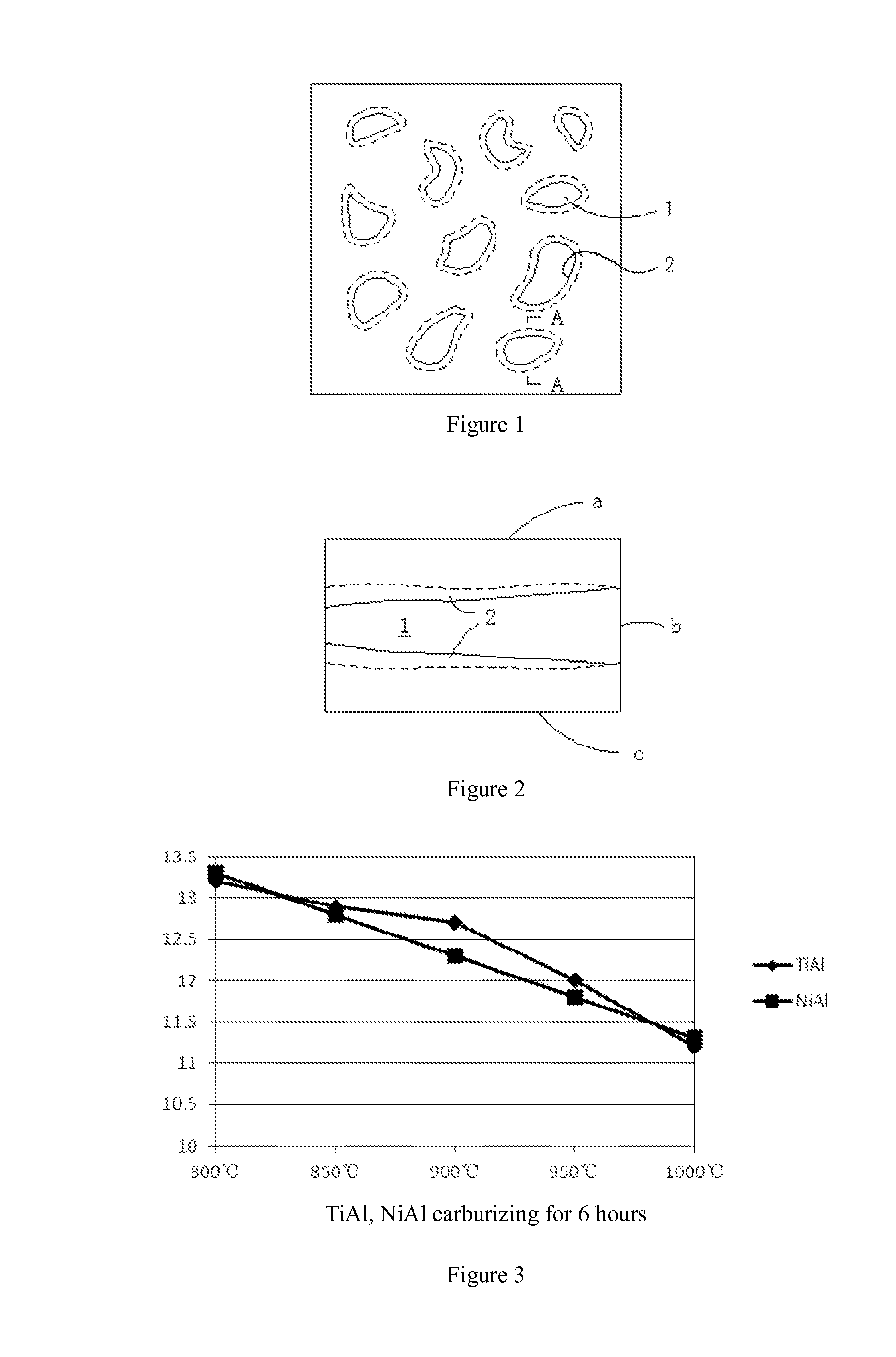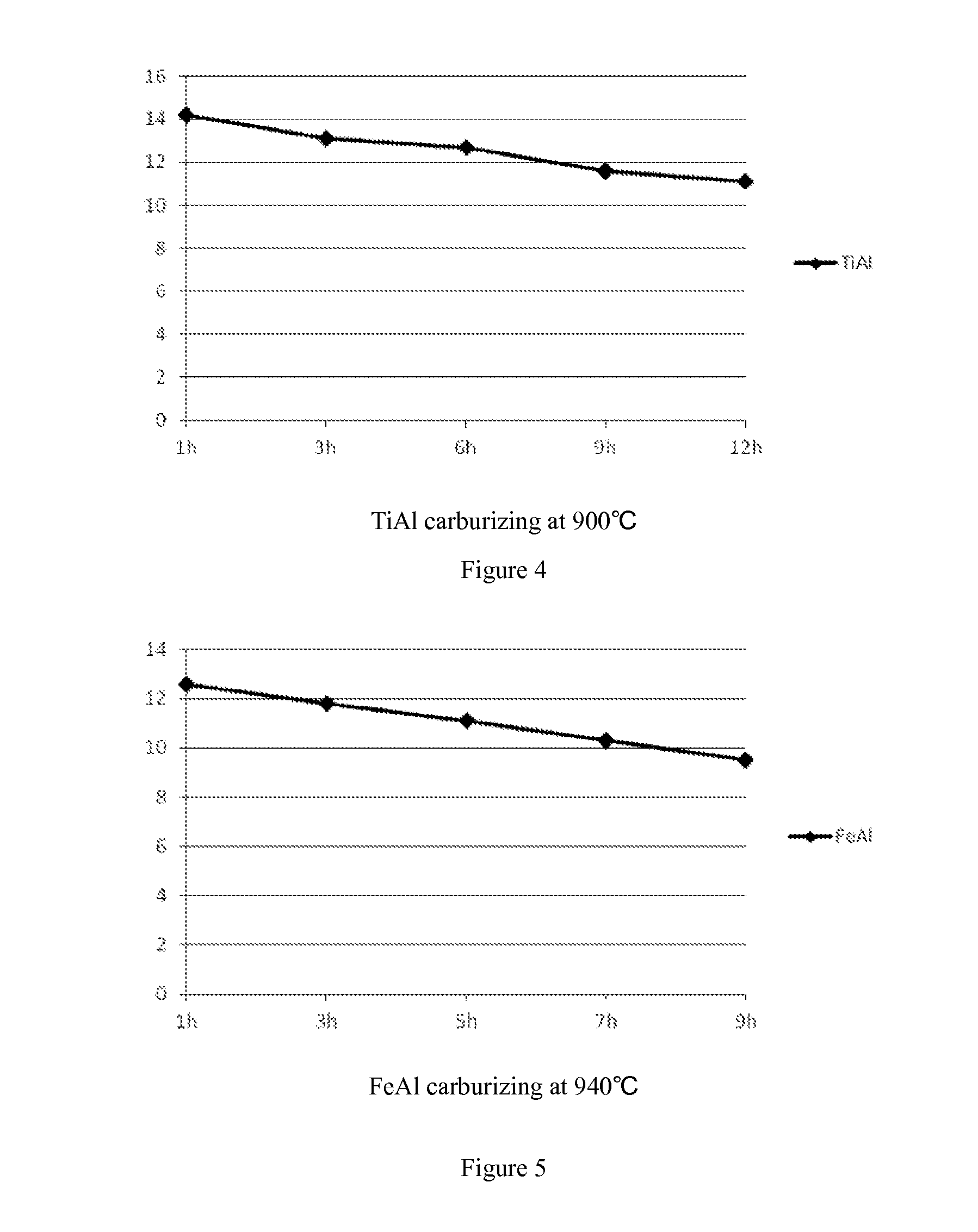Method for adjusting pore size of porous metal material and pore structure of porous metal material
a technology of porous metal and pore structure, which is applied in the direction of solid-state diffusion coating, transportation and packaging, coatings, etc., can solve the problems of limited range of adjustable pore diameters, poor corrosion resistance relatively good machinability of porous metal materials, so as to improve the corrosion resistance and high-temperature oxidation resistance of materials, the effect of small pore diameter and large pore diameter
- Summary
- Abstract
- Description
- Claims
- Application Information
AI Technical Summary
Benefits of technology
Problems solved by technology
Method used
Image
Examples
embodiment 1
[0047]The first group of embodiments treated titanium porous materials with carburizing, nitriding and carbonitriding processes separately. Before the carburizing, nitriding and carbonitriding porcesses, the initial average pore diameter of the materials was 20 μm, and the initial porosity of the materials was 30%. The specific processing parameters, the average pore diameters after the chemical-thermal treatments and the porosities after the chemical-thermal treatments of this group of embodiments are shown in Table 1.
TABLE 1Pore structureof the materialafter theCarbonchemical-potentialthermal treatmentChemical-and / orAveragethermalTemperatureTimenitrogenporePorositytreatment(° C.)(h)potential (%)diameter(%)Carburization85011.019.227.6318.926.8518.425.4717.823.895011.016.420.1314.014.7513.213.1711.09.0Nitridation85041.019.327.9818.727.61218.024.31617.522.995041.016.019.2813.613.91212.611.91610.68.4carbonitriding85021.019.628.8419.026.9618.325.1818.024.395021.017.122.2416.219.7615.41...
embodiment 2
[0048]The second group of embodiments treated TiAl intermetallic compound porous materials with carburizing processes. Before the carburizing processes, the initial average pore diameter of the materials was 15μm, and the initial porosity of the materials was 45%. The specific processing parameters, the average pore diameters after the chemical-thermal treatment and the porosities after the chemical-thermal treatments of this group of embodiments are shown in Table 2.
TABLE 2Pore structure of the material after chemical-thermaltreatmentCarbonAverage porePermeated layerChemical-thermalTemperatureTimepotentialdiameterPorositythicknesstreatment(° C.)(h)(%)(μm)(%)(μm)Carburization80011.014.642.6 1313.737.5—613.234.8—912.832.8—1212.330.2—90011.014.542.0—313.435.9—612.933.3—912.330.3—1211.626.9—100011.014.240.3—313.134.4—612.732.2—911.626.9—1211.124.6—110011.013.536.4—312.732.2—612.028.8—911.124.6—1210.220.8—120011.012.832.8—312.129.3—611.225.1—910.220.8—129.317.330
embodiment 3
[0049]The third group of embodiments treated TiAl intermetallic compound porous materials with nitriding processes. Before the nitriding processes, the initial average pore diameter of the materials was 15 μm, and the initial porosity of the materials was 45%. The specific processing parameters, the average pore diameters after the chemical-thermal treatments and the porosities after the chemical-thermal treatments of this group of embodiments are shown in Table 3.
TABLE 3Pore structure of the material after chemical-thermaltreatmentNitrogenAverage porePermeated layerChemical-thermalTemperatureTimePotentialdiameterPorositythicknesstreatment(° C.)(h)(%)(μm)(%)(μm)Nitridation80041.014.542.00.5813.838.0—1213.033.8—1612.732.3—2012.229.8—85041.014.340.9—813.536.4—1212.732.2—1612.229.8—2011.827.8—90041.014.039.2—813.134.3—1212.330.2—1611.426.0—2011.225.1—95041.013.435.9—812.631.7—1211.626.9—1610.421.6—2010.321.2—100041.012.933.0—812.229.8—1211.124.6—169.919.6—209.016.220
PUM
| Property | Measurement | Unit |
|---|---|---|
| Temperature | aaaaa | aaaaa |
| Length | aaaaa | aaaaa |
| Time | aaaaa | aaaaa |
Abstract
Description
Claims
Application Information
 Login to View More
Login to View More - R&D
- Intellectual Property
- Life Sciences
- Materials
- Tech Scout
- Unparalleled Data Quality
- Higher Quality Content
- 60% Fewer Hallucinations
Browse by: Latest US Patents, China's latest patents, Technical Efficacy Thesaurus, Application Domain, Technology Topic, Popular Technical Reports.
© 2025 PatSnap. All rights reserved.Legal|Privacy policy|Modern Slavery Act Transparency Statement|Sitemap|About US| Contact US: help@patsnap.com



